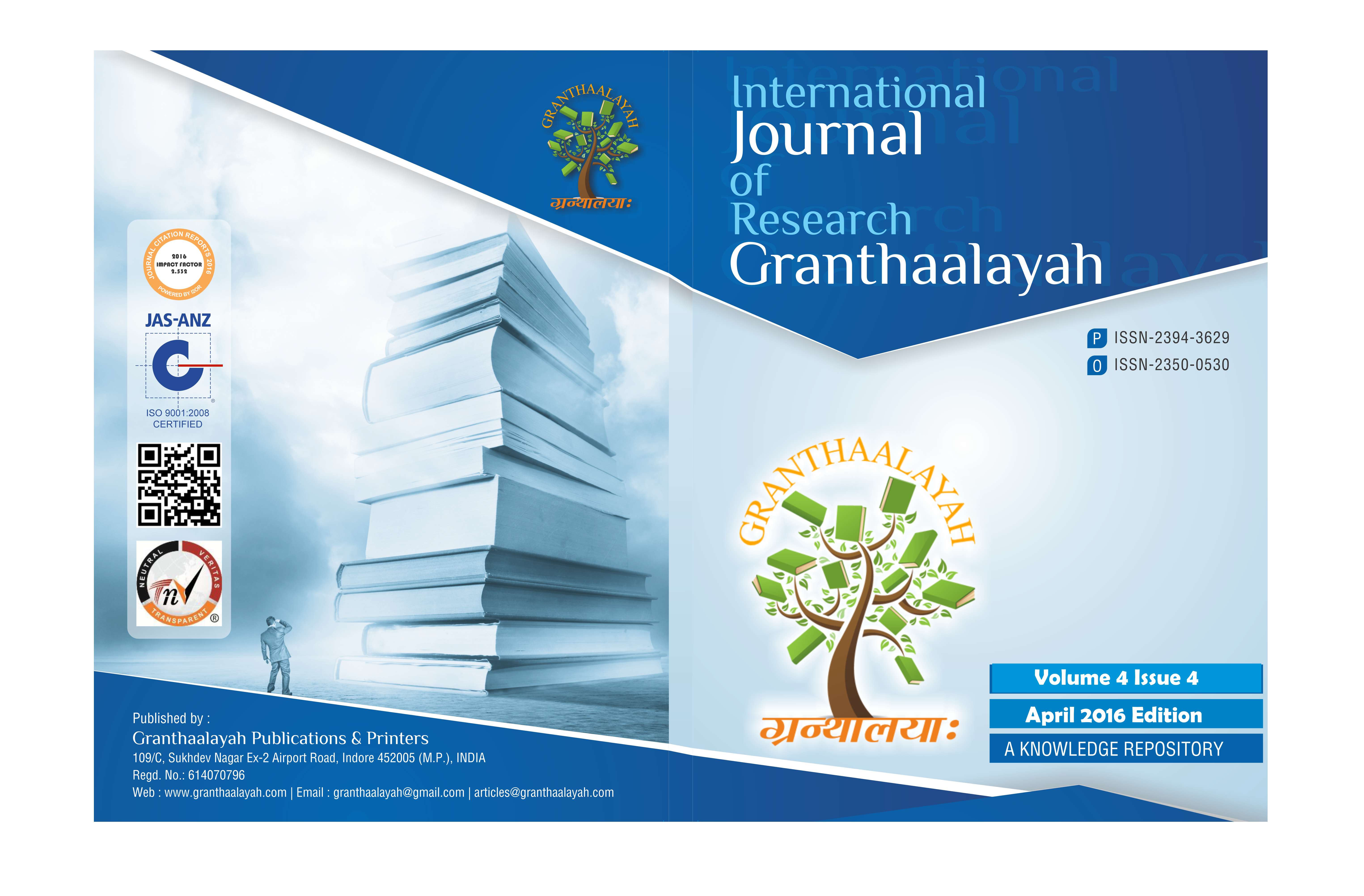RELATIONSHIP BETWEEN FAMILY INTERACTION, FAMILY BURDEN AND QUALITY OF LIFE AMONG CAREGIVERS OF PATIENTS WITH EPILEPSY
DOI:
https://doi.org/10.29121/granthaalayah.v4.i4.2016.2763Keywords:
Family Interaction Pattern, Family Burden, Quality Of Life, Caregivers, EpilepsyAbstract [English]
Living with epilepsy imposes great challenges on both patients and their family caregivers but most researchers only explored the impact on patients, with less attention given to family caregivers. Our study intended to explore the needs and problems of epilepsy family caregivers of epilepsy patients encountered during the caregiving process. The present study was an attempt to assess the relationship between Family interaction pattern, family burden schedule and Quality of life of the caregivers of individuals with epilepsy. This study was conducted at the Ranchi Institute of Neuro-Psychiatry and Allied Sciences, Ranchi. It was a cross sectional study and purposive sampling was used. The present study was conducted among 60 caregivers of epilepsy, those who were willing to participate and those who have satisfied with inclusion and exclusion criteria have been included in the study. The socio demographic data sheet had been used for collecting socio demographic details of the caregivers of individuals with epilepsy. Family interaction pattern scale, family burden interview schedule and WHO Quality of life scale were applied on the caregivers of individuals with epilepsy. Statistical analysis was performed by using the SPSS programme 16.0 version. The result found that family interaction pattern has effect on family burden and quality of life. Likewise family burden has greater impact on quality of life. The study highlights the need for family interventional programs to address the specific issues related to family interaction, burden and quality of life of caregivers.
Downloads
References
Anderson E, & Barton R. (1990). Epilepsy: a family burden? ClinPsychol Forum. 1990; 25:3–5.
Anna, C.W. (2007). Quality of Life and Burden in Caregivers of Patients with Epilepsy, Journal of Neuroscience Nursing, 39(6), 354 – 360. DOI: https://doi.org/10.1097/01376517-200712000-00006
Baronet, A. M. (1999). Factors associated with caregiver burden in mental illness: A critical review of the research literature. Clinical Psychology Review, 19(7), 819-841. DOI: https://doi.org/10.1016/S0272-7358(98)00076-2
Chou, K. R. (2000). Caregiver burden: A concept analysis. Journal of Pediatric Nursing, 15(6), 398-407. DOI: https://doi.org/10.1053/jpdn.2000.16709
IoannisKarakis, Andrew J. Cole, Georgia D. Montouris, Marta San Luciano, Kimford J. Meador, and CharitomeniPiperidou (2014). “Caregiver Burden in Epilepsy: Determinants and Impact,” Epilepsy Research and Treatment. DOI: https://doi.org/10.1155/2014/808421
Jaya Kumar et al (2002). Assessment of burden of care among caregivers of persons with Epilepsy. Eastern Journal of Psychiatry. 06 (182):36-41
Kumar, P., Nehra, D.K., &Verma, A.N. (2013). Subjective well-being and coping among people with schizophrenia and epilepsy. Dysphrenia. 4:25-30.
Ray BK, Ghosal M, Ganopadhyay PK, Roy T. (2004). Assessment of burden of care amongst caregivers of students with epilepsy. A study from Eastern India.9:140-142
Shiva Sirari, DeeptiDhar, RichaVishwakarma and SapnaTripathi (20014) .Association between quality of life, depression and caregiver burden in epileptic patients in Haldwani, Uttarakhand, India. Int J CurrSci, 10: E 54-60
Thomson, P.J & Upton, D. (1992). The impact of chronic epilepsy on the family. Journal of seizure, 1(1), 43 – 48. DOI: https://doi.org/10.1016/1059-1311(92)90054-5
Downloads
Published
How to Cite
Issue
Section
License
With the licence CC-BY, authors retain the copyright, allowing anyone to download, reuse, re-print, modify, distribute, and/or copy their contribution. The work must be properly attributed to its author.
It is not necessary to ask for further permission from the author or journal board.
This journal provides immediate open access to its content on the principle that making research freely available to the public supports a greater global exchange of knowledge.

























